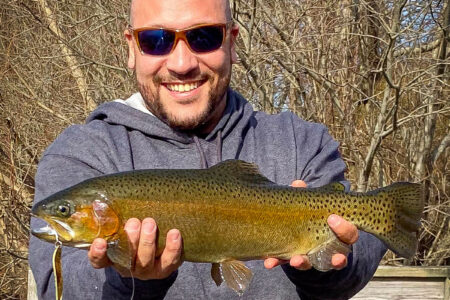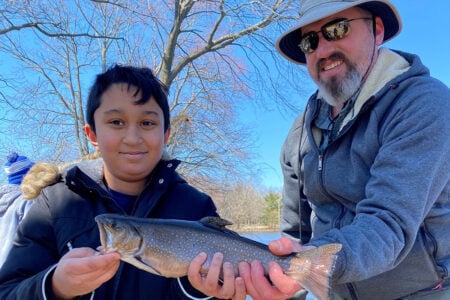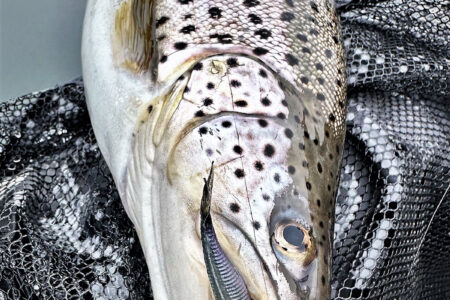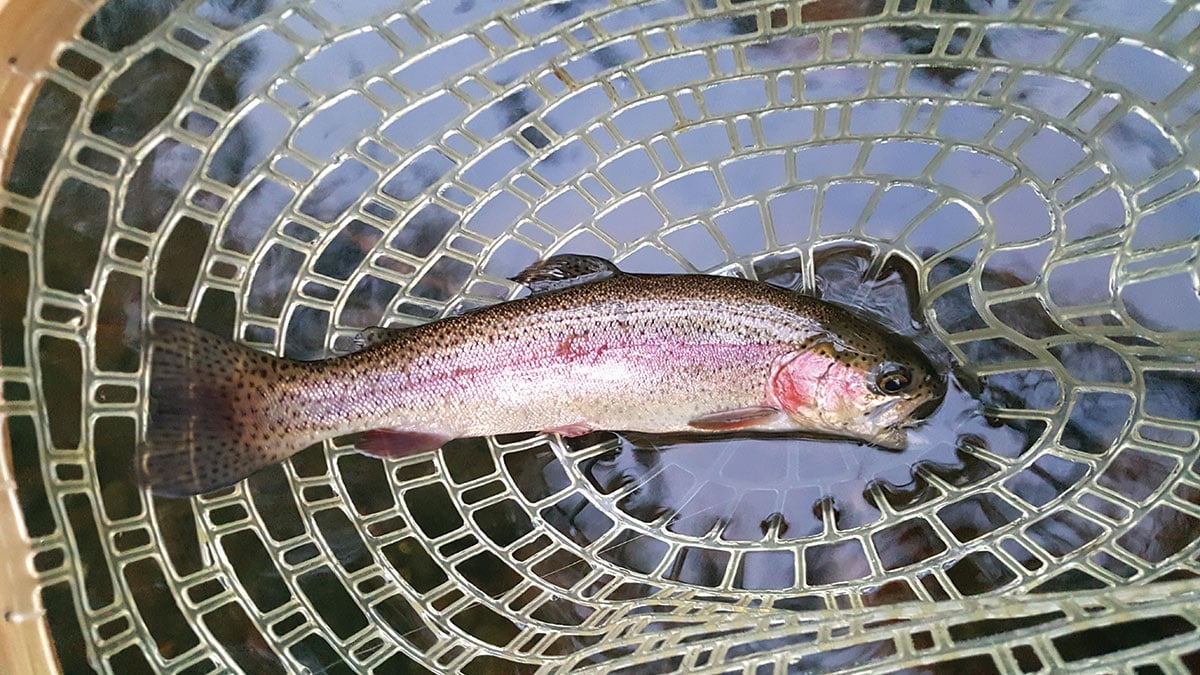
When it seems the trout are flat out refusing your favorite lures, give the long wand a shot.
I have always loved spring trout fishing, from when I was a kid in the Carl’s River below Belmont Lake and Southard’s pond, to present day in my mid-50s. In my younger years of course we used bait and then graduated to spoons and spinners. To this day I still enjoy these fish smacking a slowly retrieved lure. This always worked in April after the trout were stocked and in many places stocked twice. Then May rolled in along with the frustration. The trout didn’t want to touch my arsenal of Kastmasters, gold Phoebe spoons and small Rapalas but they were actively feeding or swirling on the surface. I learned that it was time to break out the fly rod.
Not That Difficult
I think the biggest fear for people that want to break into fly fishing is the casting. Now you’re not going to start laying out graceful 50-foot casts right away, but with a little practice you’ll be able to get started at many places on Long Island. The Internet, specifically YouTube, has excellent how to videos. You should start with two basic casts. First is the roll cast. This is great for casting short distances and where you’re not able to make a back cast. This is a must in tight, tree-lined streams. Next is the basic “pick up and laydown” cast. Unlike conventional casting, keep in mind you are casting the weight of the fly-line not what’s tied to the leader. Key points that you will hear will be loading the rod on the back cast and stopping short on your forward cast to propel the line forward. You should be very comfortable with these basic casts before moving up to the single and double haul casts.
Gear Up
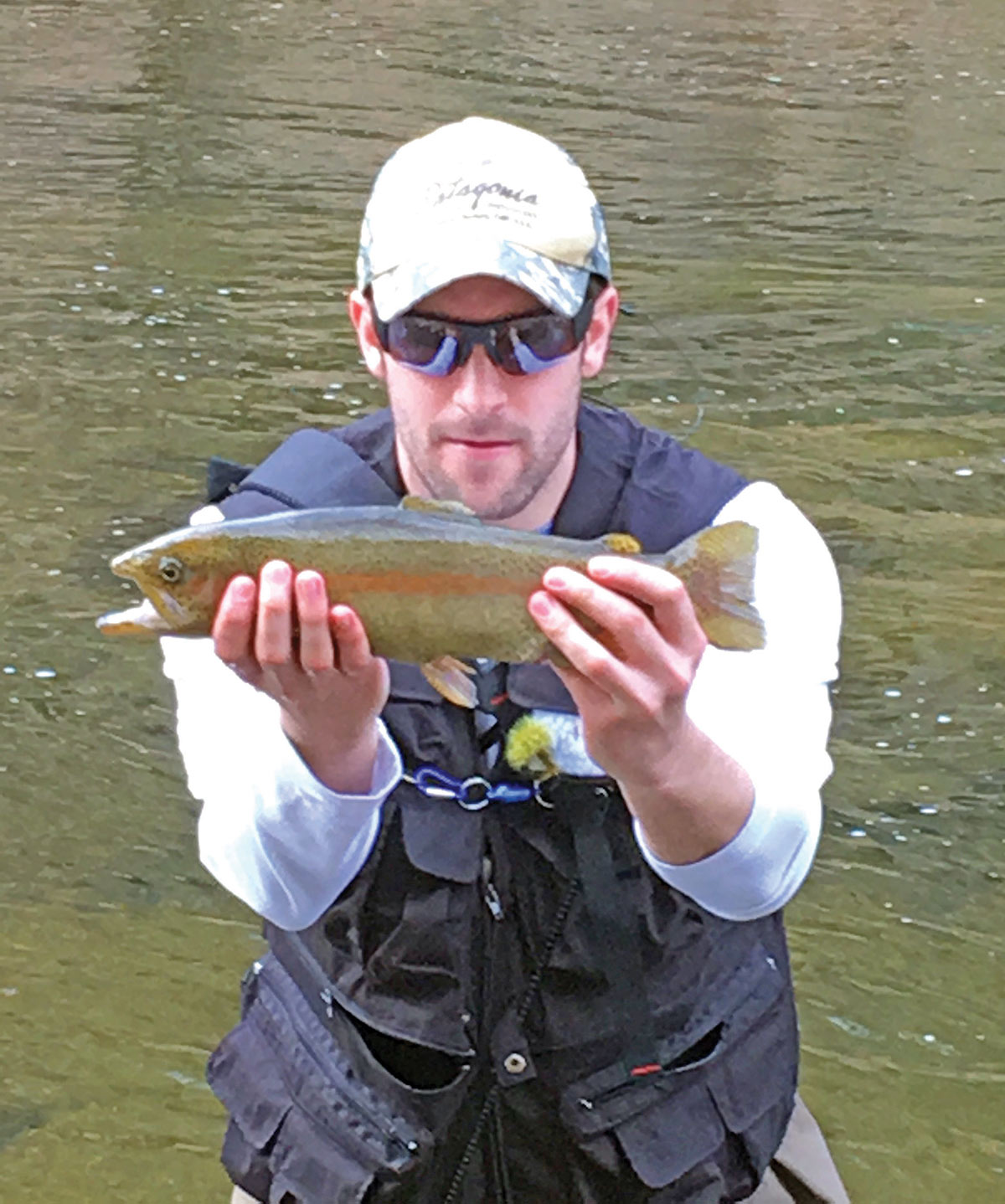
An 8-foot, 5-weight outfit with weight forward floating line is a good all-around setup. You can go to a lighter 4-weight for the stocked trout but if you plan on fishing in the Connetquot Preserve or maybe using it for bass next month I recommend the heavier rod. There are some nice combination setups available to get you started. The Orvis Encounter and the Redington Crosswater combo outfits are solid choices if you’re just starting out.
Next, you will need tapered leaders and tippet, which gets tied to the end of the leader. You pretty much want to match the rod weight to the leader plus or minus 1. So for your 5-weight outfit your leader would be 4-6X. Then it gets a little tricky. A 4X leader is actually heavier and a 6X lighter. The same scheme goes for the tippet. If you have gin clear water, bright sunny days or finicky fish go lighter on your tippet. Pick up some dry fly powder and maybe some floatant. Use only a tiny drop of the floatant on the body of the fly and never on the wings or the shuck, which is the piece that hangs down on the rear of the fly.
Your Fly Box
Fly selection I admit can be a little overwhelming. With thousands to choose from we’ll have to break it down a bit. We’ll stick to the surface activity here and keep it simple. Let’s look at four categories, un-weighted nymphs, emergers, dry flies and terrestrials. Nymphs are sub-aquatic insects before the metamorphosis into an adult, or dry fly. The next part of the hatch process before the fly can come off the water is the emerger stage. Most dry flies come in an emerger pattern and are very effective. Terrestrials are not sub-aquatic insects and simply include bugs such as ants, grasshoppers and dragonflies. Must have nymphs for just below the surface are the hare’s ear, pheasant tail, zebra midge and a couple of different caddis pupa. Your dry flies should include an assortment of mayflies such as blue wing olives, Hendrickson, sulphurs, drakes and light cahills. Next, you’ll need an assortment of caddis and midge. An absolute must have fly is the Adams. This will match most of the mayflies and if you have the correct size, trout cannot turn them down. Most dry flies also have a parachute version, which has bright color top that you can see but the fish can’t. Be sure to include the emergers in your fly box.
Where-to
With the stocked lakes, I like Patchogue West Lake and Upper Yaphank Lake. You’ll have some rising fish within casting distance from shore, however, you are far better off in a kayak, float tube or row boat. Follow the rising fish, match the hatch and be patient. Fishing still water you will have to cast and let the fly just sit there. Strip line just enough to take up slack and every so often give the fly a little twitch. If you see the fish swirling up top and not smacking your dry, try an emerger pattern or an un-weighted hare’s ear or pheasant tail nymph. Keep this just below the surface by stripping in s-l-o-w-l-y. You could even put some floatant on the first 6 to 8 inches of your tippet above the fly. There have been a good amount of midge hatches on the lakes. Small number 20 to 22 Griffith’s gnats or the Orvis “I can see it” midge patterns work great. These have a bright indicator tied into the top, which is great with such a small pattern.
As for streams, we all know the Connetquot Preserve is a great place to learn and catch big fish. How about Caleb Smith State Park? This doesn’t get much attention but it’s a nice fishery with the North Shore’s Nissequogue River running through it. This is the same reservation and beat system as the Connetquot Preserve. Additionally, the Nissy receives plenty of stocked fish downstream from Caleb Smith at the Paul T. Given park area and the Smithtown Bull. Wading upstream from there you will hit White’s Pool, which is a great spot away from noise and traffic.
The Carman’s River within Southhaven Park is a nice dry fly fishery. Throughout the season you can experience all of the various hatches and learn what they look like. Along with a lot of stocked rainbow and brown trout the river sustains a nice population of native brook trout. These fish don’t get very big, maybe 6 to 8 inches. To sustain these native brookies the number of the larger 2-year-old brown trout that are stocked is very limited. I personally don’t agree, but there are some avid trout fishermen that lobby for this.
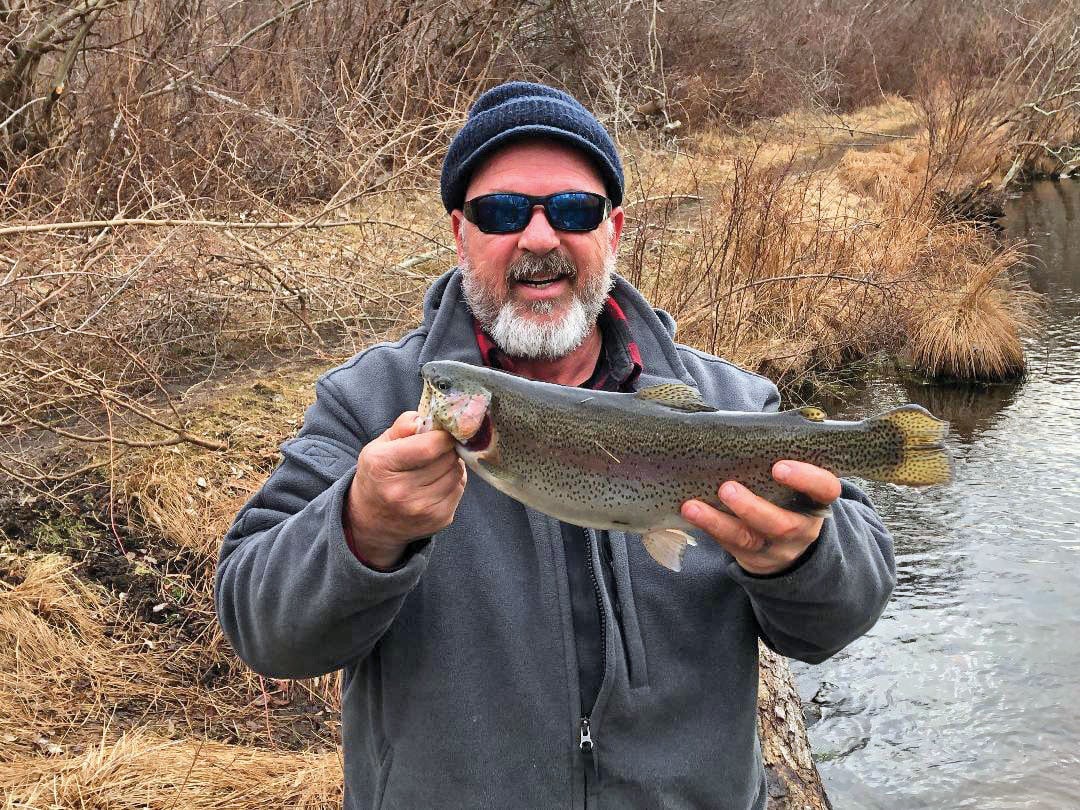
Dry fly fishing is true fly-fishing for trout. Here you have the challenge of figuring out the bugs and the excitement of the surface take. Big trout can hit very subtly or like freight trains so be ready and just lift your rod to set the hook. It’s always best to bring the fish in via the reel instead of just stripping in line. This is important with big fish and it avoids the mess of line at your legs or net when landing the fish. If you can’t figure out the exact fly, try and match the profile and size first, then the color. In the streams, it’s important to have a “drag free” drift of your fly, meaning the fly shouldn’t be pulling towards you on its way downstream. After your cast you will have to “mend” or flick extra fly line upstream. Adding a “reach” cast to your repertoire will help here.
So this year when the trout are flat out refusing your lures, give the long wand a shot. It’s a completely different, fun and challenging way to fish. Once these fish start smacking your fly on top, you’ll be hooked.
| Improve Your Fly Fishing & Catching |
|---|
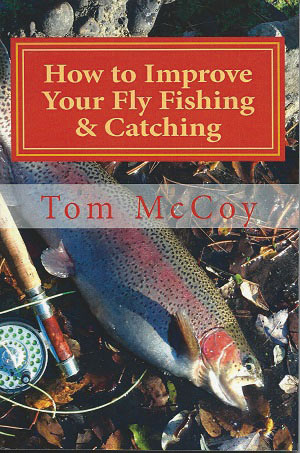 A new book by Long Island angler Tom McCoy will remind you of those little things that make the difference between catching and not. These 30 tips written in an entertaining style will sharpen your approach and improve your catch rate. It and its companion, How to Fly Fish for Trout, the first book to read, are available on www.Amazon.com in both print and digital. Also available at River Bay Outfitters, Campsite Sport Shop, Caleb Smith State Park and Cold Spring Harbor Fish Hatchery. Inquiries welcome at [email protected] A new book by Long Island angler Tom McCoy will remind you of those little things that make the difference between catching and not. These 30 tips written in an entertaining style will sharpen your approach and improve your catch rate. It and its companion, How to Fly Fish for Trout, the first book to read, are available on www.Amazon.com in both print and digital. Also available at River Bay Outfitters, Campsite Sport Shop, Caleb Smith State Park and Cold Spring Harbor Fish Hatchery. Inquiries welcome at [email protected] |

